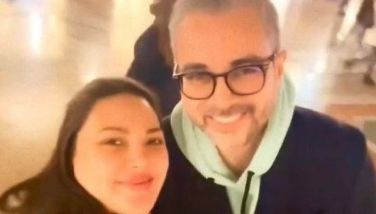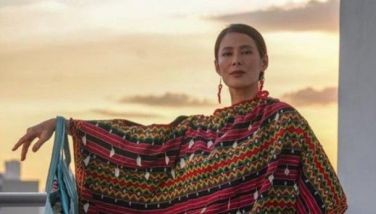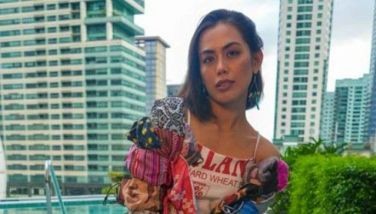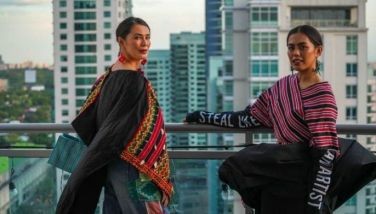The animated world of Josie Trinidad

Spotlight on the talented Filipino animators in Hollywood, one of whom, Ronnie del Carmen (with co-director Pete Docter), won Best Animated Feature for Inside Out at the just-concluded 88th Oscars which also nonimated Ronnie for Best Original Screenplay. Two years ago at the 86th Oscars, Fil-Am Robert Lopez (with his wife Kristen Anderson-Lopez) won Best Original Song for Let It Go (with two more awards at the Grammys) which they wrote for the hit animated feature Frozen.
Today, Funfare focuses on Josie Trinidad, co-Head of Story of Zootopia still showing in some theaters nationwide, distributed by Walt Disney Studios Motion Pictures International through Columbia Pictures.

Two of the characters in Zootopia: Nick Wilde and Judy Hopps (right) who is Josie’s favorite ‘because I can relate to her the most.’
Zootopia is a place where no matter what you are — from the biggest elephant to the smallest shrew — you can be anything. But when rookie officer Judy Hopps arrives, she discovers that being the first bunny on a police force of big, tough animals isn’t so easy. Determined to prove herself, she jumps at the opportunity to crack open a case, even if it means partnering with Nick Wilde, a fast-talking, scam-artist fox to solve a mystery.
Here’s the exclusive e-mail interview with Trinidad who joined Disney Animation Studios in 2004 as a story apprentice, hired as a story artist after she completed her training and promoted to her present position.
How much more challenging is your work on Zootopia than that in your previous projects (The Princess and the Frog, Tangled and Wreck-it Ralph)?
“It’s all been challenging really. No film that I’ve worked on was easy to make. The most challenging part of the job is the story process itself. My story teacher at CalArts (California Institute of the Arts) was Mark Andrews, who was a story supervisor on The Incredibles and the director on Brave.
“Storyboarding is grueling work; one sequence can be hundreds or sometimes thousands of drawings and very often those sequences can be entirely cut from the film. You have to develop a thick skin as an artist, and you have to work very quickly and clearly.
“Deadlines are incredibly tight, and there’s no guarantee or formula for making a great film. There’s lots of failure, but it’s about picking yourself back up and reworking the story until you get it right. It’s a very tough job and for me, it’s also the most rewarding.”
Describe your Filipino roots (where you were born, raised, had early education, kind of family you came from).
“I am a second-generation Filipino-American and was born and raised in California. Both my parents are from the Philippines. My mother is Carmencita Lazo Trinidad, born and raised in Canlubang, Laguna. My maternal grandparents came from Ilocos, San Juan, La Union. And my father is Amado Fernando Trinidad, born and raised in San Juan, Manila with roots in Marikina.
“I’ve been to the Philippines several times. My dad graduated from medical school at UST in 1958 and obtained a residency in Nova Scotia, Canada. My mom was a nurse who came to the US in 1964 to work in Texas at first then ended up in Montreal, Canada, where she met my dad. They married and immigrated to the US to work in Brooklyn, New York. I believe they moved to the US because of the opportunities afforded to them.”
What Filipino values/culture you think are still very much part of who you are?
“Family is a huge part of my life. Through my family, I have a strong support system and a strong sense of community. This is so helpful because the world of animation and filmmaking is tough, grueling work. It’s nice to get away from work and be in such a loving and supportive environment. I actually find that it refreshes me and helps me stay grounded.”
Any plans of revisiting your roots or relatives here and reacquainting yourself with the life here and culture?
“I actually just returned from a trip to the Philippines yesterday (Feb. 27). My Dad passed away in November, and his birthday was Feb. 23. So on what would have been his 84th birthday, we took his remains to be buried with his mom and dad and brothers in the family plot in San Juan City.
“It was really nice because we were able to visit his two remaining sisters who are 90 and 98 years old. We also saw many relatives we had not seen for many years. And we visited the house my dad grew up in and heard stories about his childhood. It was a wonderful trip home. Before this, I had been back to the Philppines a few times as a child and most recently was there in October 2015. I find it very inspiring to come and visit the Philippines.”
How and when did you get fascinated with/interested in animation?
“I have always loved drawing, writing and reading. As I child, I watched a lot of TV and movies, especially cartoons. And I especially loved Disney Animation. But there were two defining moments that solidified my love of animation — I saw Cinderella in the theaters when I was five years old and found myself immersed in the world and its characters. I loved the songs, loved the magic of animation bringing cartoons to life, but I also loved the underdog story of a maid becoming a princess. It’s my favorite Disney movie to this day.
“And when I was about 10 or 11, my best friend and I were watching Robin Hood on VHS and accidentally paused it. It started playing frame by frame and at that moment I realized those were individual drawings. To me, they were the most beautiful and appealing images I had ever seen, and at that moment, I realized that a person…the animator…had gone through the painstaking task of drawing each frame. That was when I first thought that was what I wanted to become — an animator.”
Can you tell us about your work as Head of Story for Zootopia? What were the biggest challenges?
“Again, I would say that the most challenging part of the job is the story process itself. The challenge of Zootopia in particular is that we didn’t have much time to get the story right. We made a lot of big story changes late in our schedule, which meant that we had to very quickly get our story right or the movie might not get made.
“I credit our talented writers, Phil Johnston and Jared Bush for turning the movie around so quickly. We also had tremendous help from Jennifer Lee, who co-wrote Wreck-it Ralph with Phil Johnston and she wrote and directed Frozen. With all these great minds in the room working out the story, we were able to turn the story around in a short amount of time.”
Is there a particular scene that’s absolutely fun to transform visually? Please tell us about it.
“Hopefully, if we’ve created an interesting story with compelling characters in a world we’ve never seen or experienced before, then every scene in the script will be fun to transform visually. For me, I gravitate towards character-driven scenes where the acting and the humor are the highlights. In Zootopia, the sequence I’m most proud of is called ‘Homesick Hopps’ when Judy comes home after her terrible first day on the job.
“Her life in the big city isn’t what she thought it would be, and she gets a phone call from home. While she’s immensely homesick she doesn’t want her parents to know she’s failed, but they find out anyway and it’s like rubbing salt on a wound. I’m very proud of what we finally ended up with because even though it was reworked over and over again, and the emotional core of the scene always stayed intact.”
Who’s your favorite character in Zootopia and why?
“My favorite character is Judy Hopps probably because I can relate to her the most. I’m also from a small town and had big dreams as a kid to work in animation. I finally made it just like Judy but it came with a lot of work and perseverance.”
There are also other noted Filipino-American artists in the US like Ronnie del Carmen, Ruben Aquino, Nelson Bohol, Chris Chua and they’ve talked about trying to incorporate bits and pieces of their Pinoy heritage into their work. Do you also do that? Also, have you met these guys or worked with them?
“I don’t consciously incorporate bits of my heritage in my work, but because family and tradition are a huge part of my life, I believe that it naturally is part of my work. It’s really a big part of who I am as a person, so that gets immediately translated into my ideas for stories and characters.
“I have only met Ronnie del Carmen briefly at lectures or when he has come down to Disney Animation for screenings. He’s an incredible artist and a really nice person. I’m thrilled he was nominated for an Academy Award for Best Original Screenplay for Inside Out, and for their win of the Best Animated Feature for Inside Out.
“I worked with Ruben Aquino on Princess and the Frog, and I went to school at CalArts with Chris Chua. I don’t know Nelson Bohol personally but I am a great fan of his work.
“I would also like to add that here at Disney Animation I worked with Filipino-American artist Armand Serrano on Zootopia, a great visual development guy, and there are two other Filipino-American story artists, Jeff Ranjo and Joe Mateo. There are quite a few of Pinoys working in animation, and they’re all extremely talented. I’m proud to work beside these guys.”
How did you get into the animation industry?
“I loved cartoons and I loved Disney Animation, but when I was about 14 years old I learned about CalArts (California Institute of the Arts) from a family friend, Theodore Anthony Lee Ty (or Ted as I knew him) who was studying Character Animation there. Ted’s dad and my dad went to UST together, and when he studied at CalArts we often came to visit, and I discovered there was a school that taught you the fundamentals of animation. Ted went on to become an animator at Disney and Dreamworks.
“Once I discovered you could make animation a career, I knew it was what I wanted to do. Ted offered a lot of advice on how to get into CalArts and Disney, so I began taking drawing classes in high school and even though I studied English Literature at UCLA, I always knew I wanted to go to CalArts. I applied after UCLA and was accepted. And when I graduated in 2002, it was actually a pretty terrible time in the animation industry. There were a lot of layoffs and not many places were hiring. I was able to get a job doing character packaging art for a toy company, and after a few years I learned about a story internship at Disney Animation. I applied, was accepted, and I’m still here 11 years later.”
How tough was it breaking into the industry and starting out?
“It was extremely tough for me to break into the industry. I admit that I was a pretty terrible animator and designer, and like I said before when I graduated from CalArts in 2002, the animation industry was going through a tough spell — Disney wasn’t doing much 2D animation, and there were lots of layoffs at all studios. I couldn’t get a job even though I was aggressively submitting applications and portfolios. Out of work with nothing to do, I spent a lot of time at home listening to director commentaries on DVDs while painting and drawing things that I liked. It was a relaxing and creatively prolific time of my life, even though I felt like a huge failure since I couldn’t get a job.
“And a few years after graduating, my former story teacher at CalArts, Mark Walton, told me about a story internship at Disney. I applied and used a lot of the artwork I created after I graduated from school in my portfolio. Luckily, Disney liked my portfolio and gave me a story test, which I passed and I’ve been here at Disney since 2004. I believe it’s because of the many failures after school, the countless rejected applications and tests, that I got to a point where I didn’t care as much about getting a job and really focused on who I was as an artist. I felt that if I can develop my own artistic self and not give up, then eventually I would find my place in a creative field. Luckily for me, that place ended up being Disney Animation, the place I’ve always wanted to be since I was a kid.”
What’s free time like for you when you’re not working?
“I love to spend time with my husband and our three-year-old son. They’re what inspires me most in life. And I love to spend time with my extensive family both here in California and in the Philippines. We love to travel — having recently taken trips to Alaska, Japan, Hong Kong and the Philippines. I also love to create art outside of work, mostly printmaking and watercolors.”
Any advice for those who want to follow in your footsteps?
“My advice to aspiring story artists is to build your artistic skill set, focus on drawing, composition, editing, acting, film analysis and structure, but also enrich your mind through experience. Meet people, listen to their stories, go places, see the world, experience life. Because this is where your own characters and stories are going to come from.
“Also I would say don’t give up — keep on working to improve yourself, improve your storytelling and film making, and improve your artistic skills. Because with persistence and great effort, you will be able to find that first elusive job. And then continue to create art just for the sake of it. This love of creating art will help inspire you when you think you’ve run out of creativity.”
(E-mail reactions at [email protected]. You may also send your questions to [email protected].)
- Latest
- Trending














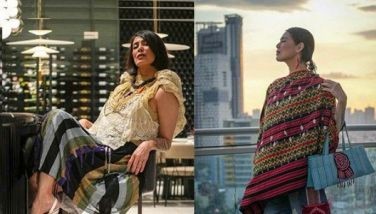
 Exclusive
Exclusive